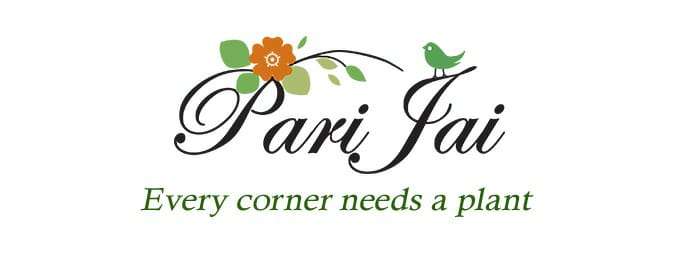Navratra is a Nine Day continuous worship of different goddesses. These pure 9 daysEach day, a different avatar of Goddess Durga is worshipped
Shailaputri- Harad
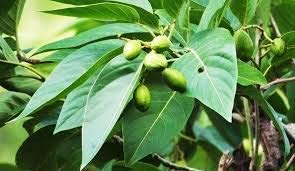
THE KING OF MEDICINAL PLANTS
The very first form of Durga is Shailputri. Also Called as Abhya, Pathya and Haritaki in Sanskrit, Terminalia chebula or the Black Myrobalan from the Combretaceae family occupies a rather important seat in the ayurvedic books.
Why the ‘King of medicinal plants’?
Because Harad efficiently balances all the three doshas in the human body — vata, pitta and kapha.
As said in Ayurveda, it is called a ‘rasayan effect’ which means a herb or medicine that cures the disease, raises the body’s immunity and protects it from the symptoms of premature ageing.
Harad has a dark brown trunk with oval shaped leaves and growing in long white clusters are the small yellowish flowers.
It produces small nut-like fruits which are picked when still green, pickled, boiled with a little sugar in their own syrup or used in preserves.
Types of fruits: Vijaya, rohini, putana, amrita, abhaya, jivanti, and chetaki which are based on the colour and shape of the fruit. Unripe fruits are more purgative and the ripe ones are astringent.
The vijaya variety which is traditionally grown in the Vindhya Range of west-central India is preferred. This fruit also provides material for tanning leather and dyeing cloth.
Terminalia chebula is a main ingredient in the Ayurvedic formulation Triphala which is used for kidney and liver dysfunctions. The dried fruit is also used in Ayurveda as a purported antitussive, cardiotonic, homeostatic, diuretic, and laxative.
This is why we are not
Wondering what it does? Read on.
Therapeutic uses
- The harad fruit has diuretic, astringent, antiseptic, cardiotonic, and febrifuge properties.
- It is an effective laxative.
- It is an important ingredient of ‘triphala’, an Ayurvedic formulation used in the treatment of constipation, kidney dysfunctions, eye diseases, and sore throat.
- Harad is loaded with vitamin C, iron, manganese, selenium, and copper that provides nourishment to the scalp, thus, controlling hair loss and promoting hair growth.
- The use of Harad is beneficial for eyes, body ache and general weakness.
- Useful in reducing cough and its associated problems like breathlessness.
- Improvement of the motility of the gastrointestinal tract can be done using the oil of this amazing herb which in return aids in easy bowel movement.
- Applying Harad powder along with a carrier oil may heal wounds as it fights against infectious diseases.
SHAILPUTRI VAHAN:
According to the pictorial depiction of Mata Shailputri, she is mounted on a bull.
MATA SHAILPUTRI MANTRA:
Om Devi Shailaputryai Namah
- Brahmacharini- Brahmi
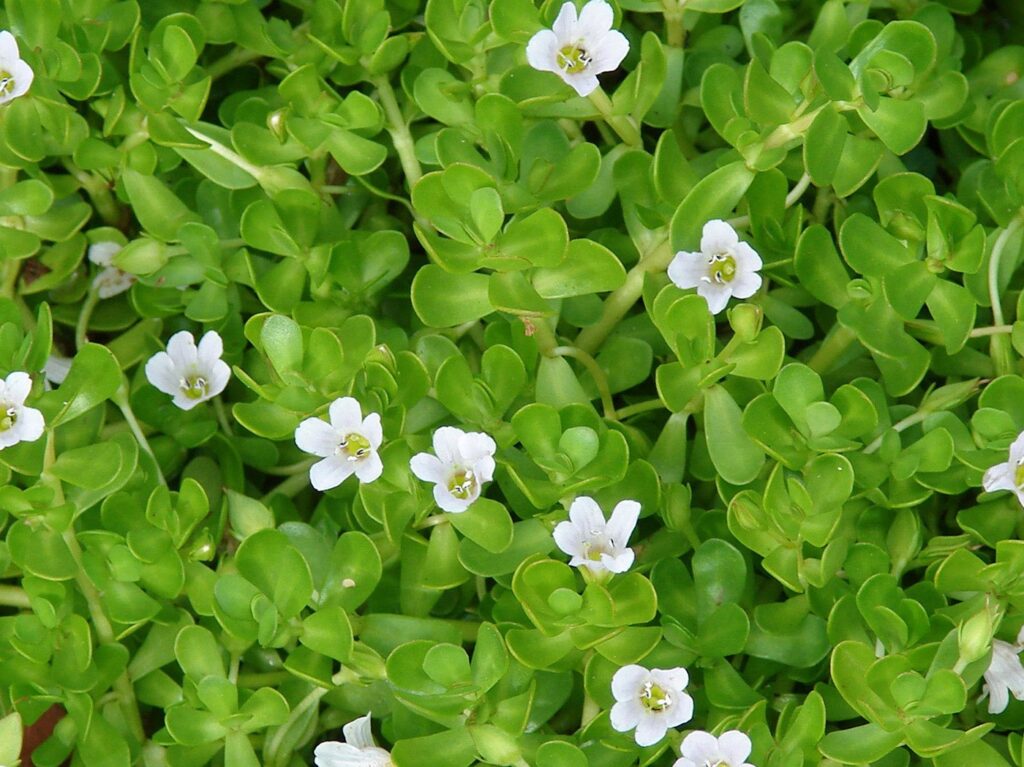
Goddess Parvati, according to Hindu legend, spent thousands of years in terrible penance. Her diet consisted solely of Bilva leaves, and later, only water. She wedded Lord Shiva only after Lord Brahma blessed her years later. The unmarried form of Goddess Parvati, also known as Goddess Brahmacharini, is worshipped on the second day of Navratri.
Maa Brahmacharini, according to mythology, governs Lord Mangal, the giver of all good fortunes, and represents the Swadhistana chakra in spiritual practices and the word means, ‘the one who practices austerity’. People are reported to gain a tremendous deal of self-confidence after worshipping her on the second day of the nine-day celebration. Maa Brahmacharini, the giver of all good fortune, alleviates her worshippers’ deepest grief by curing all mental illnesses. She holds a rosary in the right hand and ‘kamandal’ in the left.
It is known by the common names water hyssop, brahmi, thyme-leaved gratiola, herb of grace and Indian pennywort.
Bacopa monnieri is a non-aromatic herb. The leaves of this plant are succulent,
Bacopa monnieri is used in Ayurvedic traditional medicine to improve memory and to treat various blood related ailments. Reviews of preliminary research found that Bacopa monnieri may improve cognition, although the effect was measurable only after several weeks of use.
VAHAN
She is depicted as walking on bare feet.
MANTRA
Om Devi Brahmacharinyai Namah!
- Chandraghanta- Chandusur
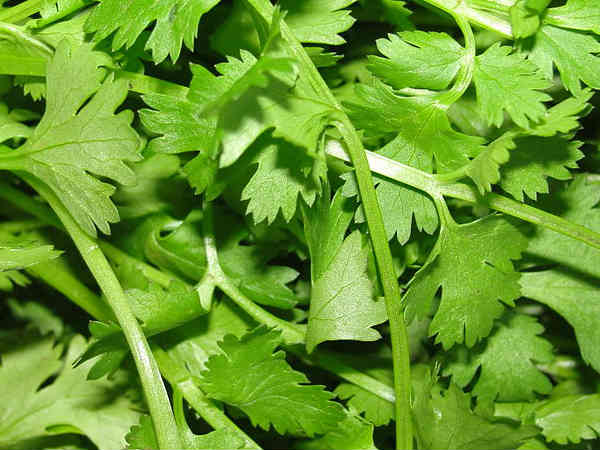

The third form of Navadurga is Chandraghanta, it has been called Chandusur or Chamsoor.This plant resembles coriander and its leaves are cooked into a vegetable.
On this day, Goddess Durga’s third form, Chandraghanta, is worshipped.
She is the wedded form of Goddess Parvati, and she is known as Maa Chandraghanta because she wears half Chandra on her forehead. She is portrayed by a tigress with ten hands. Her four left hands hold Trishul, Gada, Sword, and Kamandal, while her four right hands hold Lotus, Arrow, Dhanush, and Japa Mala. Varada Mudra is in her fifth left hand, whereas Abhaya Mudra is in her fifth right hand.
It aids in cutting down obesity, increasing strength and curing heart ailments.
VAHAN
Tigress
MANTRA
Om Devi Chandraghantayai Namah
- Kushmanda- Petha
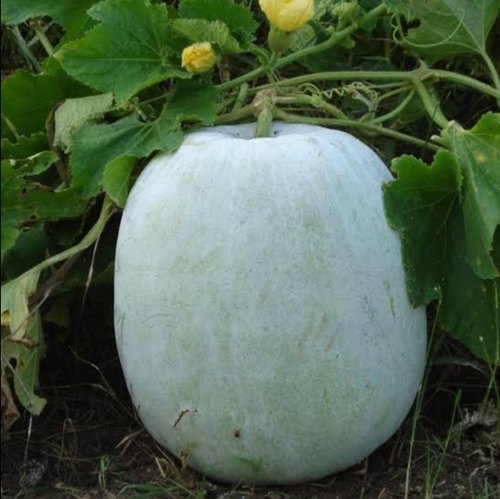
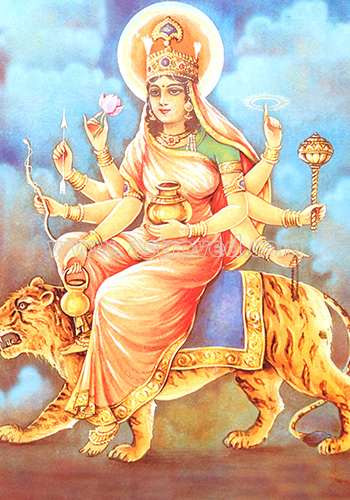
Petha is well known due to a delicious sweet “Agre Ka Petha” which comes in different alluring colours, yummm!
But did you ever imagine that the “kaddu ki sabji” that you eat with leisure is actually attached to the fourth form of Durga? Well, yes you read it right.
Childrens’ eyes shine when this pumpkin lights up on Halloween or Thanksgiving until and unless they do not have to eat it in a cooked form. But its health benefits are not to be ignored at any cost. Have a look for yourself.
Health benefits:
- A rich source of Vitamin A and antioxidants which may lower risk of cancer
- More nutrition with comparatively less calories which gives the immune system a boost
- Rich in fiber potassium and Vitamin C
- Keeps the digestive system healthy
- Good for the heart and eyes
- Don’t forget the seeds which may lower the risk of diabetes
Maa Kushmanda Vahan:
Maa Kushmanda rides on a lioness.
Maa Kushmanda Mantra:
Om Devi Kushmandayai Namah
- Skandamata- Alsi

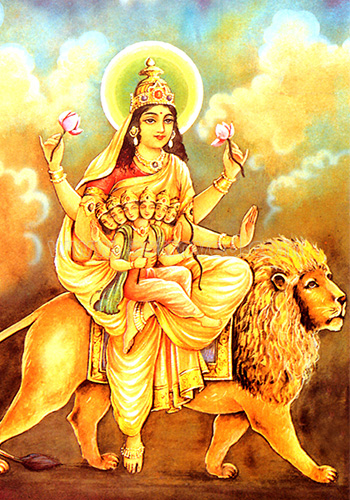
Maa Skandamata is worshipped on the fifth day of the nine-day festival. After giving birth to Kartikeya, also known as Lord Skanda, Goddess Parvati was given this name. Maa Skandamata is seen in her lap, holding baby Skanda or Murugan. With four hands, Maa Skandamata is shown. In her upper hands, she holds two lotus flowers, while in her other hands, she holds infant Murugan and Abhaya mudra. Devotees worship Goddess Parvati in this form with extreme devotion. She is revered as the Goddess of Motherhood and Love.
Benefits of Alsi or Linseed
- Rich in fiber
- May reduce blood pressure
- May lower cholesterol levels
- May help manage body weight
- Can relieve constipation and induce digestion
- Rich in omega-3
- May help reduce oxidative stress
VAHAN
Ferocious Lion
MANTRA
Om Devi Skandamatayai Namah
- Katyayani– Moiya
Navadurga is Katyayani. It is known by many names in Ayurveda such as Amba, Ambalika, Ambika. The patient suffering from this should worship it and worship Katyayani.
BENEFITS
- Helps relieve constipation
- Anti cancerous
- Aids in relieving symptoms of piles
- Joint inflammation
- Ulcerative Colitis
- Urine problems
- Destroys phlegm
VAHAN
Bull
MANTRA
Om Devi Katyayanyai Namah॥
- Kaalratri- Nagdaun
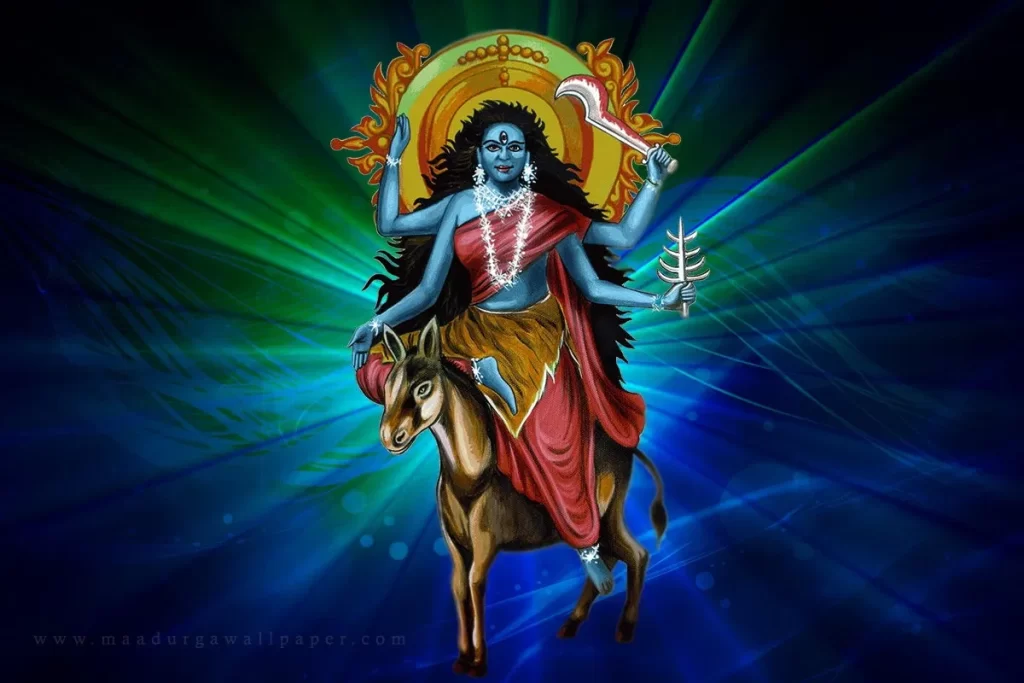
The seventh day of the nine-day Hindu festival is dedicated to Goddess Kalratri which signifies power and protection.
Grace, power, prestige, and prominent stature are bestowed upon devotees. Maa Kalaratri protects her worshippers from demons’ bad influence. Goddess Kalaratri is said to provide siddhis, knowledge, power, and money to her devotees.
Kalratri, Durga’s seventh form, is also known as Mahayogini or Mahayogishwari. Nagdaun medication is the name given to it. The treatment to overcome all mental and brain ailments, providing triumph everywhere, is the destroyer of all diseases. If a person grows this plant in his home, all of his problems will disappear. It’s a drug that gives pleasure while also killing all toxins. This Kalratri should be worshipped by every sufferer.
Devi Kalratri is one of Maa Shakti’s destructive forms, along with Kali, Mahakali, Bhadrakali, Bhairavi, Mrityu, Rudrani, Chamunda, Chandi, and Durga.
VAHAN
Donkey
MANTRA
Om Devi Kalaratryai Namah
- Mahagauri
The eighth form of Navdurga is Mahagauri and the plant associated with it is Tulsi- the medicinal plant. Tulsi is found in almost every home due to its pleasant fragrance and taste. The “tulsi wali chai” is just so yummy and beneficial for every part of our body.
There is a very little need to repeat its never ending benefits. It is just so good for our well being.
Well, there are various forms of Tulsi which are kali tulsi, white tulsi, Arjak, Shetpat and Kudherak. Ever heard of these?
These basils have numerous benefits from purifying blood to lowering heart disease risk.
Maa Mahagauri Vahan:
Maa Mahagauri rides on a bull.
Maa Mahagauri Mantra:
Om Devi Mahagauryai Namah
- Siddhidatri
Shatavari- The ninth form of Navadurga is Siddhidatri, which is called Narayani or Shatavari, also called satavar, shatavari, or shatamull
Ayurvedic Importance
- This plant holds an important place in Ayurveda as it has natural benefits and healing power. This bitter and sweet plant has a cooling effect on the human system.
- It aids in balancing pitta and vata dosha.
- It finds use in traditional ayurvedic medicine. Indigestion, gastric ulcers, hormonal and reproductive issues in women may be treated to some extent by using extract made from its dried roots. Hence, acting as a tonic for the blood and the digestive system
VAHAN
She sits on the Lotus flower
MANTRA
Om Devi Siddhidatryai Namah॥
A person suffering from this should worship Siddhidatri Devi.
According to the Markandeya Purana, every goddess cures every sickness of the human being in the form of nine medicines and makes the blood healthy, clean, and healthy in this way, according to the Ayurvedic language of Ayurveda. As a result, humans should revere and eat them.
Sarvabhuteshu Shantarupen Sanstha,
Namastasai namastasai namastasyaai namo namah.
Sarvamangal mangalye shive sarvarth sadhike.
Sharanye tryambake gauri narayani namotrastute.
